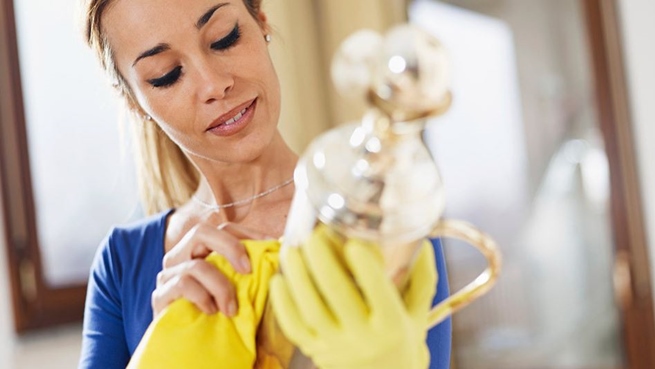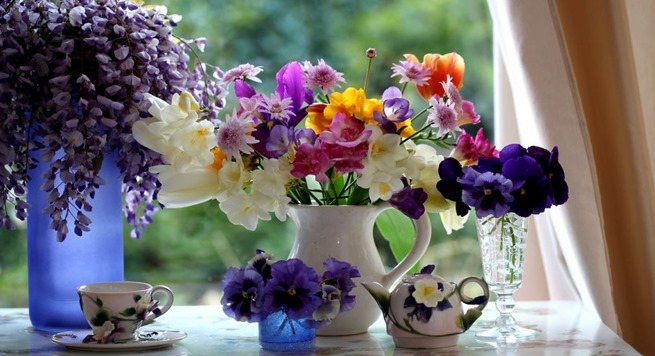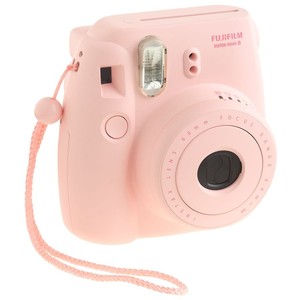Baking soda deserves our respect. Also known as bicarbonate of soda and sodium bicarbonate, this white powder is amazingly versatile. Read on to discover some of the tried and tested uses of baking soda for health, grooming, cleaning, and gardening.
Baking
Baking soda is leavener and makes bread and other baked goods rise. The recipes that call for baking soda usually include some acidic ingredients such as vinegar, sour cream, buttermilk, yogurt, lemon juice, or molasses.
If a recipe calls for baking powder, you can use three or four times less baking soda and add an acidic agent. For example, a tablespoon of baking powder translates into one teaspoon of baking soda plus two teaspoons of cream of tartar; both need to be added to the dry ingredients. Out of cream of tartar? Add one teaspoon of baking soda to the dry ingredients and two teaspoons of vinegar or lemon juice to the batter.

Health
Baking soda is used as a method for easing heartburn and neutralising stomach acid. Simply dissolve one or two teaspoons of it in a glass of water and drink. However, this remedy is not for everyone; in any case, it addresses the symptoms, not the cause, and should only be used occasionally.
A paste made by mixing baking soda with a little water can relieve itchy insect bites and sunburns, while a cup of the powder added to bathwater alleviates skin irritations.
Grooming
Exfoliate your face and body with a paste made out of three parts baking soda and one part water. Apply to your skin in a light circular motion, rinse off thoroughly, dry and apply a moisturizer. This treatment may not be suitable for people with sensitive skin.

For cleaner hair, squeeze the usual amount of the shampoo onto your palm and sprinkle some baking soda over it. This will remove the residue of styling products from your hair. (It will also strip off some of the hair dye, so be warned.)
Baking soda sprinkled every now and then onto a toothbrush with toothpaste will add an extra boost to your teeth cleaning routine, while a teaspoon of baking soda dissolved in half a glass of water will freshen your mouth and neutralise odour. Use it as you would any mouth wash.
Cleaning and deodorising
Want to clean your hands (but don’t have soap)? Need to get that smell of onion, garlic or fish off your hands (but don’t have soap)? Baking soda to the rescue! Make a paste with some water, scrub your hands and rinse.
Cleaning and removing unpleasant odours is in fact the field where baking soda excels. Alone or mixed with some water or vinegar, baking soda can be used to clean practically any surface: bathtubs, tiles, chrome stoves, pots and pans, barbecue grills….
To remove the build up of natural oils and hair products from brushes and combs, soak them in a basin filled with water and baking soda (about a teaspoon).
A paste made by mixing baking soda with a little water is perfect for polishing silver objects; make sure to use a soft cloth. If you shun from all the rubbing this method involves, try this alternative: boil one litre of water, add one tablespoon of baking soda and a piece of aluminium foil, then drop your silverware into it. Occasionally turn the silverware with tongs so it gets into contact with the foil and take out when bright and shiny!

Whenever cleaning with baking soda, remember to rinse the object well under running water.
To neutralise odours in a fridge or a wardrobe, place an open box of baking soda on a shelf. Your shoes and your carpet will smell sweeter after spending the night sprinkled with baking soda, while a garbage can and a litter box will do well with a constant accompaniment of about a cupful of baking soda.
Gardening
To find out the pH level of the soil in your garden, wet a patch and sprinkle a little baking soda over it. If the baking soda bubbles, your soil is acidic and perfect for plants such as azaleas, camellias and gardenias. On the other hand, clematis, crocus and geranium are among the plants that prefer alkaline soils. Alkaline-loving plants will benefit from being watered with a weak solution of baking soda (about one teaspoon to four litres of water). And any cut flower will live longer if you add a little baking soda to the water.

Armed with baking soda, you can also fight powdery mildew and prevent the development of fungal spores. Simply spray plants with a mixture of one tablespoon of baking soda and four litres of water (some gardeners like to add one tablespoon of vegetable oil and one tablespoon of dishwashing liquid). Avoid spraying directly on flowers and buds and always test on a small portion. If the combination is too strong, baking soda can burn the leaves of the plant. The application of pure baking soda can even kill some plants, which you can use to your advantage to do away with weeds and mossy patches. Just sprinkle and wait!
When you bear in mind that baking soda is also cheap and long-lasting (properly stored in a sealed container and kept in a cool and dry place, it can last for years), you really have to take your hat off to this humble white powder!










